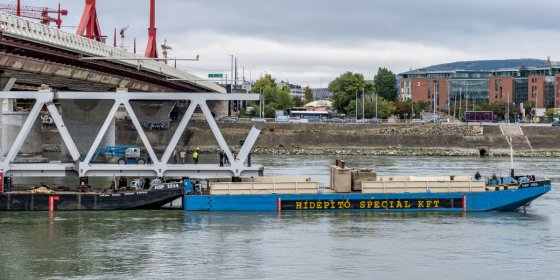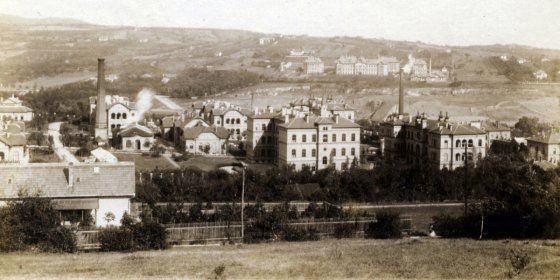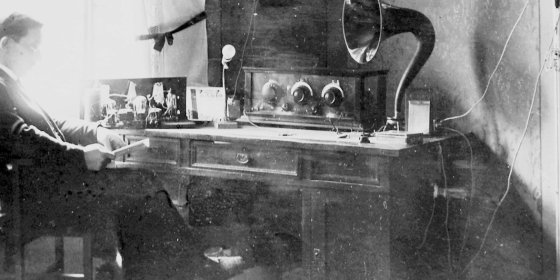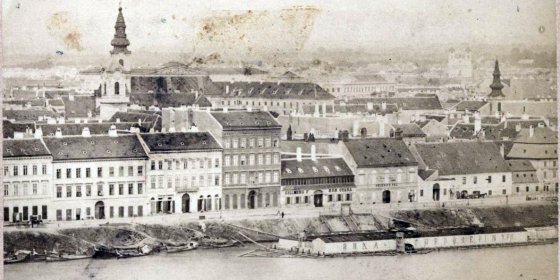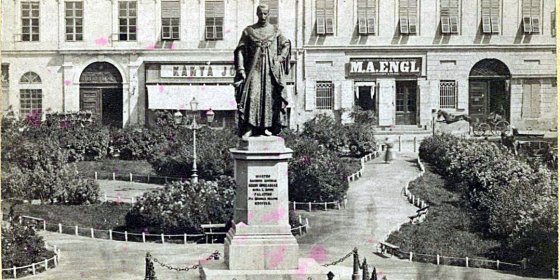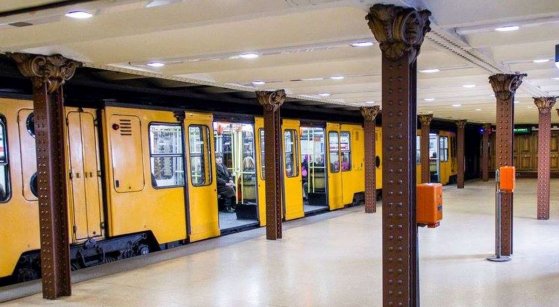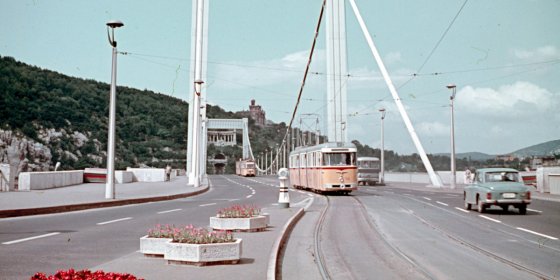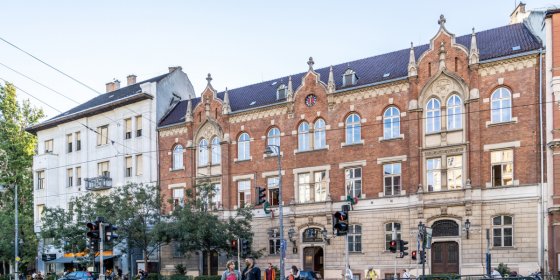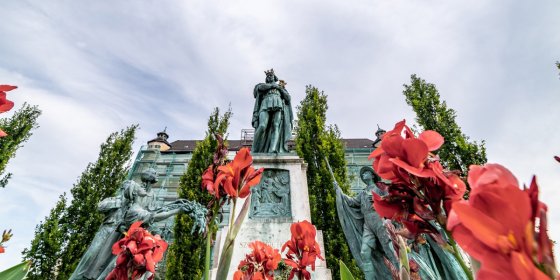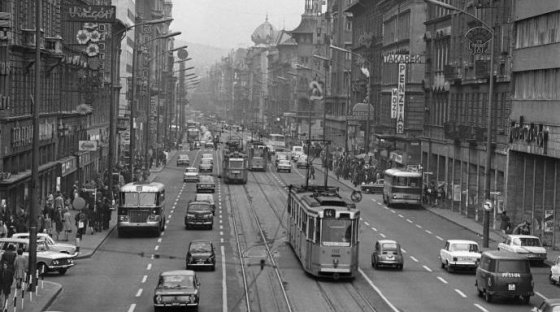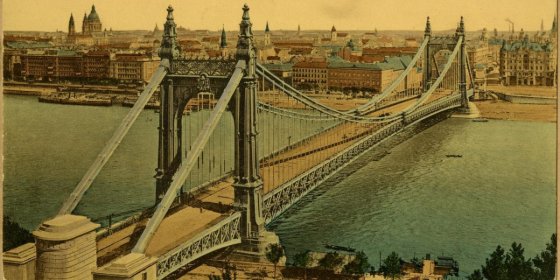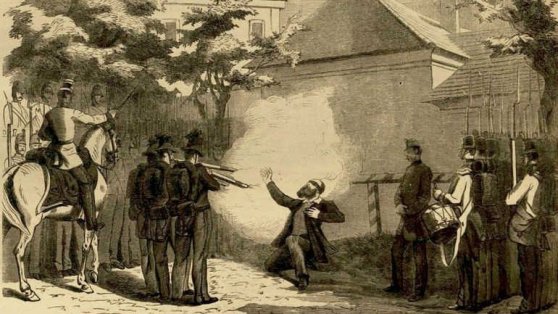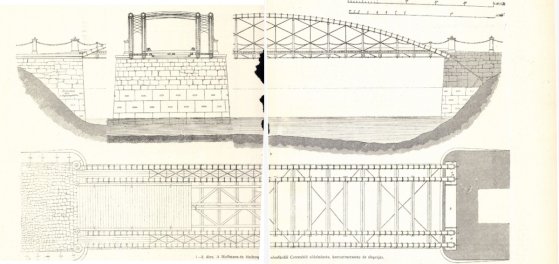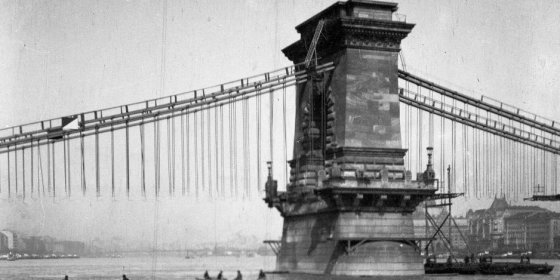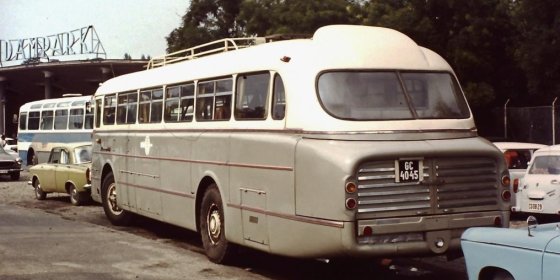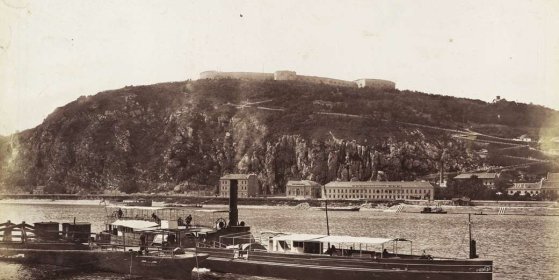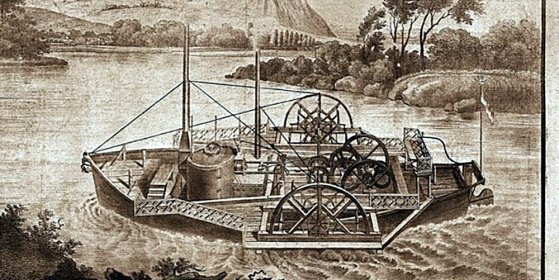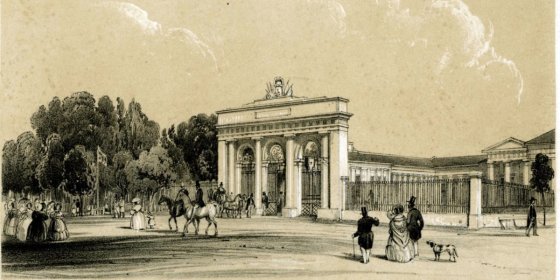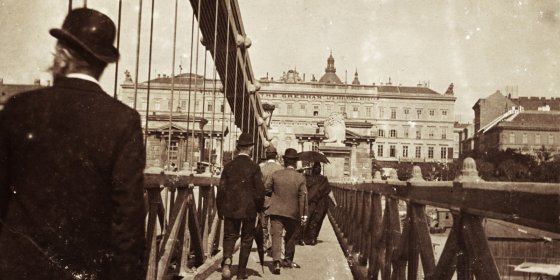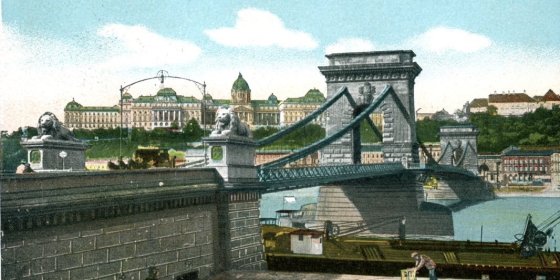 The „intertwined history” of the bridges and the city of Budapest
Which ideas and events have shaped the fate of bridges of Budapest and the cityscape? Alongside many other interesting facts, this question is also answered this newly published book by the Budapest City Archives, which introduces the history of bridges in Budapest.
The „intertwined history” of the bridges and the city of Budapest
Which ideas and events have shaped the fate of bridges of Budapest and the cityscape? Alongside many other interesting facts, this question is also answered this newly published book by the Budapest City Archives, which introduces the history of bridges in Budapest.
Csaba Domonkos
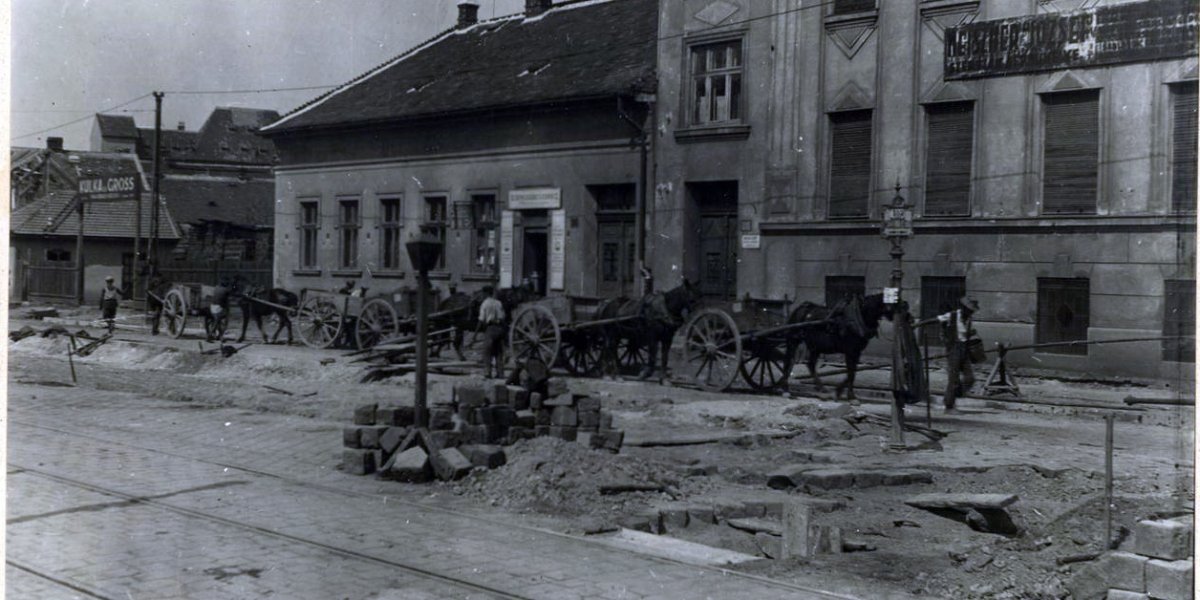 How a road to Vienna resulted in a re-evaluation of Budapest
How a road to Vienna resulted in a re-evaluation of Budapest
October 3, 2020 at 2:00 PM
The Budapest–Vienna Highway was specifically designed for cars and opened 90 years ago, on 4 October 1930. Public opinion in the country and the capital hoped that the new road would improve Hungary's geopolitical situation and improve tourism. Perhaps not many readers know that drivers would have had to leave the capital through Bécsi Road (Bécs is the Hungarian name for Vienna) in the 3rd District to reach the Austrian capital.
New rail bridge being built between Ferencváros and Lágymányos
October 2, 2020 at 11:00 AM
The bridge being built is the sixth structure to connect the tracks on the two sides of the Danube beside Rákóczi Bridge. However, the current construction is unique, as it is similar to threading a thread through a needle. See the photos of the unique procedure below.
Hospital on the outskirts – Huge effort by 19th-century decision-makers improved healthcare
September 28, 2020 at 9:00 AM
The construction of Saint John's Hospital (Szent János Kórház) began 125 years ago, on a hillside where vineyards had once stood. The 300-bed modern hospital was much needed, as the old building of the hospital, on the present-day Széna Square, was gravely overcrowded. Doctors feared that the influx of workers to the capital caused by the construction of projects connected to the upcoming national millennium would lead to catastrophe.
95 years of radio broadcasts in Budapest
September 24, 2020 at 11:00 AM
Hungarian radio had a difficult start. In its first years, listening to the radio without a license was a punishable offence, and permission to access the service was even required later. In the autumn of 1925 chaos reigned: the radio tower in Csepel had been completed, and the studio in Budapest was also being built, but many listened to the experimental broadcasts without permission and ended up in court.
Life underground – Significant population of Pest and Buda lived in cellars before the unification of the cities
September 18, 2020 at 10:00 AM
A census was conducted in Hungary in 1870, 150 years ago. It paints a stunning picture of Buda a Pest before the two cities were unified. Barely 200,000 people lived on the Pest side, and nearly 54 thousand on the Buda side. 15-thousand people lived in cellars, and 13,000 shared their rooms with at least ten other people. The census details how many doctors, writers, teachers lived in the cities, as well as how many unmarried or divorced women called the city home. Two centenarians lived in the city that was experiencing a massive development boom. It was a unique time, in which poverty and grandeur coexisted, and when the Renaissance revival homes so loved to this day were built.
The most Hungarian Habsburg moved to Buda 225 years ago
September 17, 2020 at 11:00 AM
Eventually serving as Palatine of Hungary for over 50 years, the young prince being raised in Florence would never have been expected to later be known as the Most Hungarian Habsburg. Palatine Joseph was only 19 when he moved to Budapest with much ceremony 225 years ago. He settled in the country, lived here with his wife and children, died here and was buried in the crypt of the Royal Palace in Buda Castle. His popularity was founded on the attention he paid to the prosperity of Buda and Pest.
Once a miracle of the National Millennium it was covered by graffiti a hundred years later
September 14, 2020 at 9:00 AM
Built under only 20 months, the first of its kind on the continent and tried by the King. The Millennium Underground Railway, commonly known as the kisföldalatti "small underground" may be Budapest's most likeable means of public transport. It most recent major renovation was finished 25 years ago.
Masses flocked to see the Concorde that landed at Ferihegy
September 13, 2020 at 11:00 AM
The Concorde may be the most impressive passenger aircraft ever created. Flying at twice the speed of sound, it could cross the Atlantic in only three hours. These miracles of a machine visited Budapest several times. The first landed at Ferihegy 35 years ago on 14 September 1985.
A debate raging since the 19th century: Trams on Budapest bridges
September 10, 2020 at 11:00 AM
The question of running tracks across Margaret Bridge lead to a major debate during its construction, while trams only started running on Rákóczi bridge 20 years after its construction. Original plans for the bridge to be constructed near Galvani Street did not allocate rooms for trams. Nevertheless, it seems certain that guided transportation connections between Buda and Pest will remain for decades to come.
A street of celebrities – Writers, painters and inventors once lived along Bartók Béla Road
September 7, 2020 at 1:00 PM
There is a part of Budapest where a car factory, a barracks, university halls of residence, and the entirety of Hungarian literary life in the inter-war years lived peacefully side-by-side. All within 100 metres of each other. A small section of a wonderful road with wonderful places: the stretch of Bartók Béla Road between Szent Gellért [Saint Gerard] Square and the Körtér.
Statue of Saint Emeric unveiled 90 years ago – Despite several plans, the memorial was never moved
August 16, 2020 at 10:00 AM
The statue of Saint Emeric erected in 1930 has survived the storms of history. Later it survived the battles of 1956 and the attacks of the socialist ideology untouched. Although its demolition was raised several times, the statue by Zsigmond Kisfaludi Strobl still stands where it was unveiled 90 years ago, as part of the events commemorating the 900th anniversary of Saint Emeric's death.
Motorways through the city – Fifty years ago prioritising cars was a modern choice
August 13, 2020 at 10:00 AM
A few decades ago, a highway network was planned to criss-cross the city centre. Motorists could have passed through the city centre without hindrance and reached the motorways leading out of the city, which would also have been connected by a two-level ring motorway. Today, when the goal is to have as few cars as possible in the city centre, the plans from 50 years ago are interesting.
How have the bridges of Budapest changed after their construction?
August 10, 2020 at 12:00 PM
Pestbuda's summary presenting the reconstruction of the Chain Bridge in 1914 received many comments about the bridges of Budapest, their modifications and redesigns. Please join us on a glance through which bridge has changed in the decades since its construction.
Lajos Batthyány's public reburial took place 150 years ago – The 42-year-old Prime Ministers was buried in secret after being executed
August 5, 2020 at 1:00 PM
The execution of Count Lajos Batthyány, the first elected Hungarian prime minister, remains an indescribable act of retaliation after the war of independence. The prime minister was buried in secret and then reburied publicly 21 years later, in 1870, with great pomp. The nation laid him to rest in a funeral fitting the difficult diplomatic solution worthy of a great politician.
The dream of connecting Buda and Pest – Creator of the first Hungarian steamboat designed a bridge between the cities
August 3, 2020 at 1:00 PM
Antal Bernhard, the creator of Carolina, the first Hungarian steamboat, also designed a bridge design to connect the cities of Pest and Buda. Before the construction of the Chain Bridge, nearly two dozen proposals were made on how to bridge the river, and among these, Bernhard’s plan was an important idea because it could actually have worked.
The Chain Bridge, a symbol of the country completely demolished in 1914
July 27, 2020 at 12:00 PM
During the renovation of the Chain Bridge, it will be necessary to go back to the plans of 1914. But why will they follow the 1914 version when the bridge was built between 1839-1849?
How did cars get into the City Park which has also been suggested as a site for a Formula 1 track?
July 22, 2020 at 1:00 PM
The City Park will be car-free, and the Kós Károly Promenade will be closed. But how did cars get into the City Park at all? Why does a busy main road lead through City Park, and how did it become a car park?
From Pest to Gellért Hill by funicular
July 16, 2020 at 3:00 PM
Reaching Buda from Pest downtown at the end of the 19th century was not easy. Climbing to the top of Gellért Hill had similar issues. These two problems would have been solved by the truly spectacular idea of János Ruppenthal, i.e., building a bridge and a funicular.
The first steamboat sailed from Pest to Buda two hundred years ago
July 13, 2020 at 11:00 AM
A bizarre machine started operating 200 years ago on the Danube between Buda and Pest. A 13-metre-long, small, smoking structure, with a large wheel on each side, splashed water and towed a passenger barge after it. Although the company lived for only a year, it started steam navigation on the Danube.
Obligatory Sunday shooting practice lead to the construction of the Pest Shooting« Range 180 years ago
July 11, 2020 at 2:00 PM
In the past, every citizen of Buda and Pest was required to know how to shoot. Not because they were expected to stand their ground in a dual, but because they had to be prepared to defend the cities should an enemy attack. The new Pest Shooting Range was completed 180 years ago on the present-day Lövölde Square.
The Budapest Dream – A Footbridge over the Danube
July 2, 2020 at 6:00 PM
Many people believe that the Chain Bridge could be the footbridge of the future. However, the bridge was not designed to be one. It consists of three well-separated sections: the two footpaths and the road section. There is no way to move between the sections, and the view from the middle is lacklustre due to the nature of the design. Another solution is the only way forward to create a footbridge that so many in Budapest have wanted for years.
The Chain Bridge Purchase – 150 years ago the State bought the Chain Bridge
July 1, 2020 at 12:00 PM
What is now a famous Budapest landmark, the Chain Bridge, was originally constructed by a private company and opened in 1849. In return, the company received a range of financial benefits from the state, including the right to charge everyone for crossing.
More articles
 The „intertwined history” of the bridges and the city of Budapest
Which ideas and events have shaped the fate of bridges of Budapest and the cityscape? Alongside many other interesting facts, this question is also answered this newly published book by the Budapest City Archives, which introduces the history of bridges in Budapest.
The „intertwined history” of the bridges and the city of Budapest
Which ideas and events have shaped the fate of bridges of Budapest and the cityscape? Alongside many other interesting facts, this question is also answered this newly published book by the Budapest City Archives, which introduces the history of bridges in Budapest.
 The Bridge Report, which brought a turning point in the history of Budapest
A travel report that changed the history of Pest and Buda, as well as Hungary. The little book contributed to the change of half a thousand years of legal customs and the implementation of an investment of unprecedented size and technical quality. This book was The Bridge Report [Hídjelentés in Hungarian].
The Bridge Report, which brought a turning point in the history of Budapest
A travel report that changed the history of Pest and Buda, as well as Hungary. The little book contributed to the change of half a thousand years of legal customs and the implementation of an investment of unprecedented size and technical quality. This book was The Bridge Report [Hídjelentés in Hungarian].
 Drama on the university wall - The heroic monument was planned 95 years ago
In the constant hustle and bustle of the Egyetem Square in Pest, the students may not even notice the monument that decorates the short section of wall between the church and the central building of ELTE. However, it commemorates their predecessors, the heroes who fought for their country in World War I, and those who heroically helped them. The first design of the dramatically collapsing soldier was born in 1928, ninety-five years ago.
Drama on the university wall - The heroic monument was planned 95 years ago
In the constant hustle and bustle of the Egyetem Square in Pest, the students may not even notice the monument that decorates the short section of wall between the church and the central building of ELTE. However, it commemorates their predecessors, the heroes who fought for their country in World War I, and those who heroically helped them. The first design of the dramatically collapsing soldier was born in 1928, ninety-five years ago.

